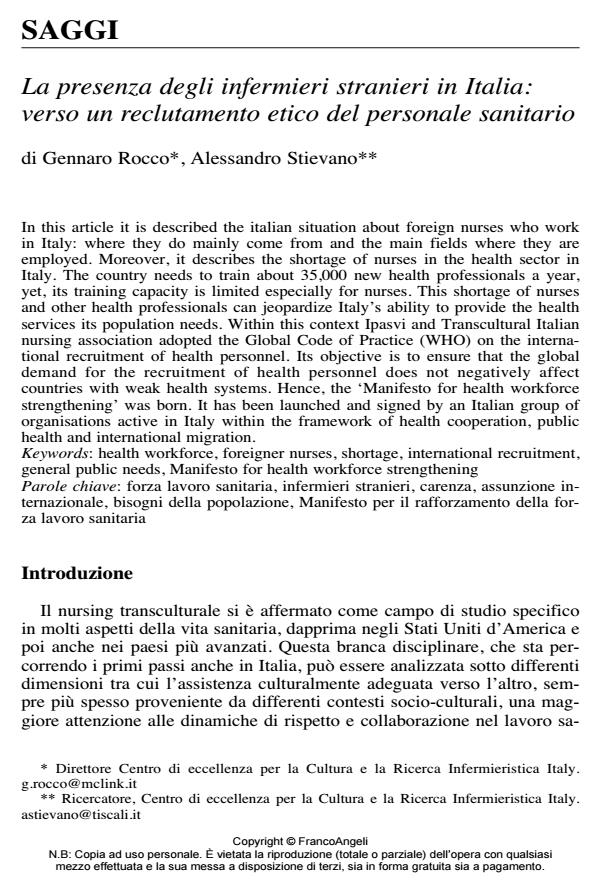La presenza degli infermieri stranieri in Italia: verso un reclutamento etico del personale sanitario
Journal title SALUTE E SOCIETÀ
Author/s Gennaro Rocco, Alessandro Stievano
Publishing Year 2013 Issue 2013/3
Language Italian Pages 14 P. 19-32 File size 109 KB
DOI 10.3280/SES2013-003003
DOI is like a bar code for intellectual property: to have more infomation
click here
Below, you can see the article first page
If you want to buy this article in PDF format, you can do it, following the instructions to buy download credits

FrancoAngeli is member of Publishers International Linking Association, Inc (PILA), a not-for-profit association which run the CrossRef service enabling links to and from online scholarly content.
In this article it is described the italian situation about foreign nurses who work in Italy: where they do mainly come from and the main fields where they are employed. Moreover, it describes the shortage of nurses in the health sector in Italy. The country needs to train about 35,000 new health professionals a year, yet, its training capacity is limited especially for nurses. This shortage of nurses and other health professionals can jeopardize Italy’s ability to provide the health services its population needs. Within this context Ipasvi and Transcultural Italian nursing association adopted the Global Code of Practice (WHO) on the international recruitment of health personnel. Its objective is to ensure that the global demand for the recruitment of health personnel does not negatively affect countries with weak health systems. Hence, the ‘Manifesto for health workforce strengthening’ was born. It has been launched and signed by an Italian group of organisations active in Italy within the framework of health cooperation, public health and international migration.
Keywords: Forza lavoro sanitaria, infermieri stranieri, carenza, assunzione internazionale, bisogni della popolazione, Manifesto per il rafforzamento della forza lavoro sanitaria
Gennaro Rocco, Alessandro Stievano, La presenza degli infermieri stranieri in Italia: verso un reclutamento etico del personale sanitario in "SALUTE E SOCIETÀ" 3/2013, pp 19-32, DOI: 10.3280/SES2013-003003